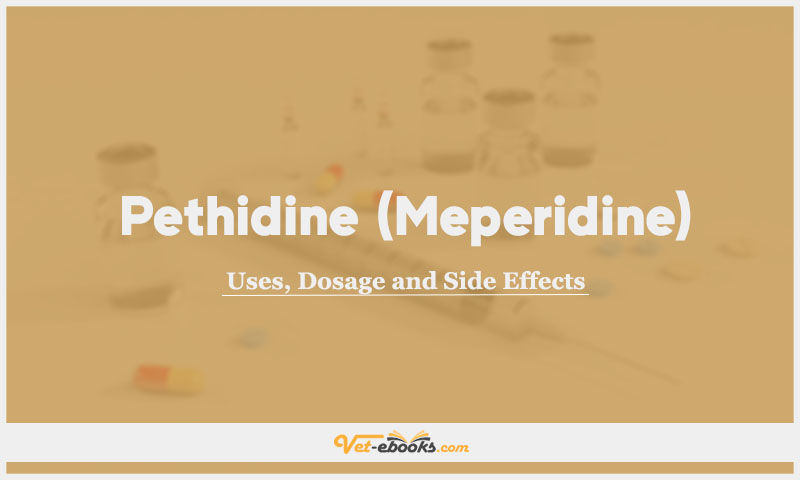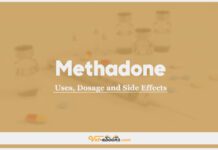Pethidine (Meperidine) In Dogs & Cats: Uses, Dosage and Side Effects

Overview
- Analgesia is mediated by the mu-opioid receptor.
Uses of Pethidine (Meperidine)
- Management of mild to moderate pain.
- Incorporation into sedative and pre-anaesthetic medication protocols to provide improved sedation and analgesia.
Dose of Pethidine (Meperidine) in Dogs and Cats
Dogs:
- Analgesia: 2–10 mg/kg i.m., s.c. q1–2h depending on pain assessment.
Cats:
- Analgesia: 5–10 mg/kg i.m., s.c. q1–2h depending on pain assessment.
Drug Dosage Calculator
You Should Give:
Side Effects of Pethidine (Meperidine) in Dogs and Cats
- Histamine released during i.v. injection causes hypotension, tachycardia and bronchoconstriction.
- Histamine-mediated reactions may also occur after i.m. injection, resulting in local urticaria.
- Pethidine crosses the placenta and may exert sedative effects in neonates born to bitches treated before parturition.
- Severe adverse effects can be treated with naloxone.
Contraindications of Pethidine (Meperidine) in Dogs and Cats
- Do not give i.v.
- Not advisable to use in animals at risk from histamine release (e.g. some skin allergies,
asthma, mast cell tumours).
Some Notes:
- Other CNS depressants (e.g. anaesthetics, antihistamines, barbiturates, phenothiazines and tranquillizers) may cause increased CNS or respiratory depression when used
concurrently with narcotic analgesics. - Pethidine may produce a serious interaction if administered with monoamine oxidase
inhibitors (MAOIs). - The mechanism of this interaction is not clear but effects include coma, convulsions and hyperpyrexia.
- Pethidine has a fast onset (10–15 min) and short duration (45–60 min) of action.
- Frequent redosing is required for analgesia.
- The short duration of action may be desirable in some circumstances (e.g. when rapid recovery is required or in animals with compromised liver function).
- It shares common opioid effects with morphine but also has anticholinergic effects, producing a dry mouth and sometimes an increase in heart rate.
- It causes less biliary tract spasm than morphine, suggesting that it may be useful for the management of pain in dogs and cats with pancreatitis.
- Due to the concentration of commercially available solutions, the injection volume can be 2–3 ml in large dogs, which can cause pain on i.m. injection.
Tip
Do You Want To Increase Your Veterinary Knowledge and Practical Skills?
You Can Now Browse and Download +3000 Books For Veterinary Professionals & Students Online.
Download Veterinary Books



















